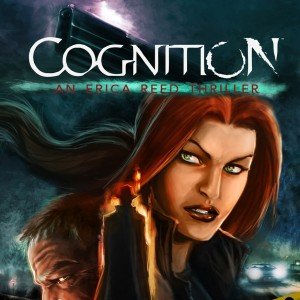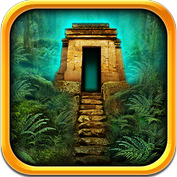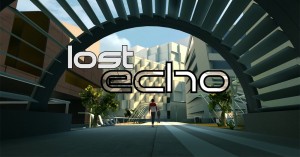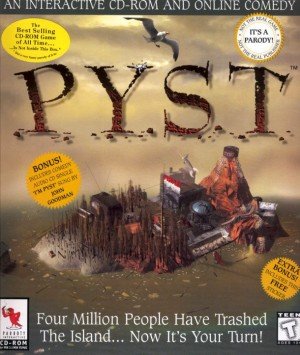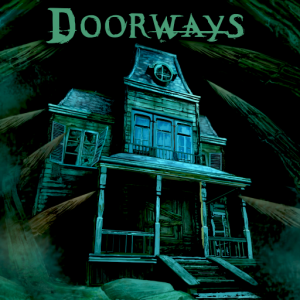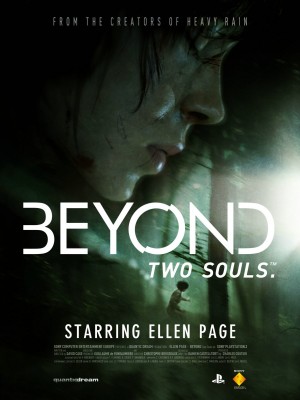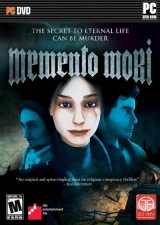Review for Gomo

When Machinarium was released in 2009, it inspired a spate of clones that adopted its surrealistic humour, detailed hand-drawn art, absurdist world, and non-verbal storytelling to wildly differing degrees of success. Enter Gomo four years later, a point-and-click adventure game in very much the same style, with cute characters, basic interactivity, and a simple story told through expressive animations. While Gomo fails to match its inspiration's rich environments, complex puzzling, and even its somewhat nuanced narrative, its modest offerings are well-executed and make for an entertaining – if extremely short and easy – experience.
Playing as the titular stuffed, toy-like Gomo, the story begins with your dog being kidnapped by aliens, who issue a demand for a mysterious red crystal in exchange for your companion. Without delay, you begin a journey through Gomo’s sketchy hand-drawn world that will take you through contraption-filled caves, and eventually into outer space and even through time itself.
Gomo is the first game by Fishcow, a small studio in Slovakia, and although it is being published by Daedalic, the fact that it began as an indie project is very much in evidence. To begin with, the game is incredibly short; it took me a mere 80 minutes to play through Gomo on its default easy mode – that’s including the time it took to make a cup of tea. This is partly due to its understated story, and partly down to a lack of puzzles. Many screens lack puzzles completely, requiring only a few simple clicks on obvious objects to progress, while other screens forgo interactivity completely and simply offer animated sequences.
When Gomo does decide to throw puzzles at you, they’re rather tame and usually involve only minutes of guesswork or trial-and-error experimentation. These are mainly environmental puzzles that require spotting the key points of interactivity, and since there are rarely more than three or four hotspots in any given environment, it’s difficult to get stumped. For veteran adventure gamers seeking a satisfying challenge, Gomo will almost certainly feel somewhat lacking. A ‘hard mode’ option simply removes cursor highlighting for usable objects, which doesn’t really increase difficulty in a meaningful way, if at all.
As well as its short length, Gomo's limited production values show up in other areas. It features an atmospheric, percussive-electronica soundtrack, but there’s a dearth of variety to the music in places, leading to some rather jarring repetition. For the most part sound is one of Gomo’s strong points, however. From the whirring synth tones of the aliens talking to the cute squeak of Gomo rubbing his eyes, the game is filled with expressive and bizarre noises that lend a lot of style to its wordless world.
There are flashes of ingenuity in Gomo that make the game worthwhile despite its rather threadbare design. Genuinely funny moments and utterly left-field surprises are sprinkled sparingly throughout the game, offering just enough incentive to make the game worth playing. Gomo gets bashed about with slapstick abandon, and seems to land on his head at the start of every scenario, while closets swallow him whole whenever he investigates one, and at one point he employs some Matrix-style slow motion to avoid a falling rock. There’s a streak of such humour throughout the game that even the most hard-hearted will enjoy at least a little.
The hand-drawn artwork is stylish enough, though adherence to a grey and brown palette gives it a bit of a claustrophobic and dull feel at times. Characters are mostly cartoony caricatures, and the game takes place predominantly in a mining factory and the plainly depicted natural environments that surround it. As bland as some screens are, however, there's a clear cohesive vision on display, and there are plenty of scenes with animations and little flourishes that give the game an earnest charm. Shadowy forms peek out from behind structures, stick figures climb mountains, and mice store random objects in the background as you set about your business. Though it’s tempting to whip past Gomo’s simple puzzles, playing at a slow pace to appreciate its details is how you’ll see the best of it.
There is nothing overtly bad, or even unlikable, about Gomo. In fact, everything the game offers is pretty good; it’s just that there’s a severe lack of substance needed to complement the game’s pacing and overall atmosphere. Its strong sense of humour and creative animation only serve to highlight the barrenness of the larger adventure around them. It’s a shame, as Gomo is only a few decent puzzles and a couple more interesting environments away from being a genuinely solid experience. As it is, it can only be recommended with a few serious caveats.
The lack of challenge (and even interactivity in a lot of places), short length, and basic story make Gomo a nice little game for children or the most casual of gamers, but it will likely leave adventure gamers looking for something to sink their teeth into feeling disappointed. Its vibrant wit and whimsical tone are far more noteworthy than its short gameplay and thin story, but if all you want is a smile and a short, mild challenge, you may find everything you need here.
WHERE CAN I DOWNLOAD Gomo
Gomo is available at:
- GOG -86%
- HumbleBundle
- Amazon







